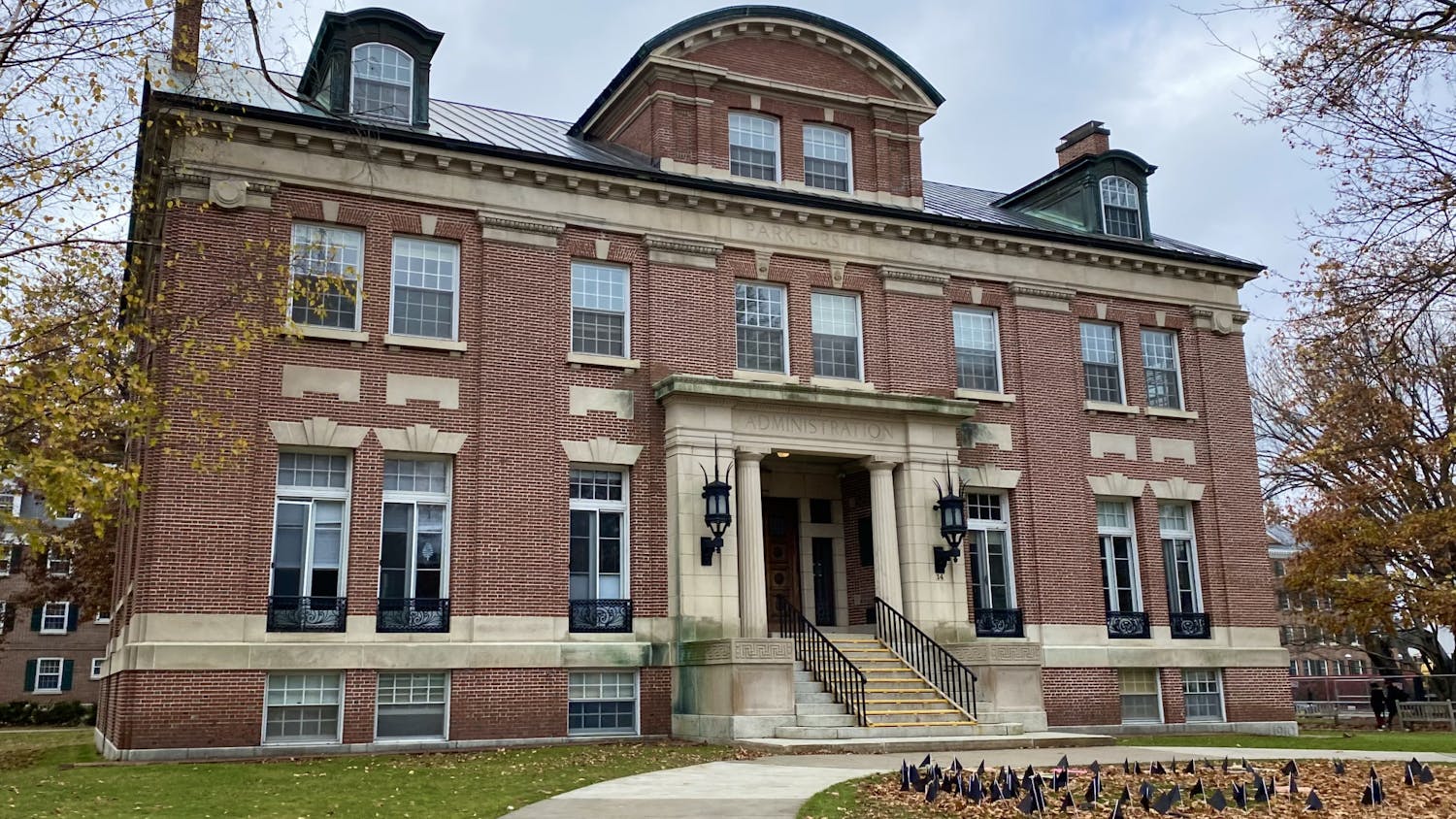This summer is shaping up to be a heavy rainfall season, with parts of Vermont already seeing a historic two-day rainstorm on July 9 and 10, prompting dangerous floods, evacuations, road closures and water rescues across the state.
While Hanover did not see major flooding, the Department of Safety and Security’s director Keiselim Montás issued a flooding alert in a campus-wide email to students on Monday, July 10. Heavy rains resulted in “cresting rivers and fast-flowing water along roadways,” Montás wrote.
According to Andrew Winter, co-chair of the Upper Valley Strong coalition supporting post-disaster rebuilding efforts, much of ongoing recovery efforts are “rightly focused” on Montpelier, Vermont — the state’s capital —and Ludlow, Vermont, which faced catastrophic levels of flooding.
“Right now, there’s lots of damaged roads and infrastructure,” Winter said. “The Federal Emergency Management Agency will be coming in to help communities recover and rebuild and repair roads and bridges that were damaged.”
Closer to the Upper Valley, one of the more heavily affected communities is Woodstock, Vermont, which is currently facing a water outage, Winter explained.
Some observers have compared the storm’s impacts to that of Hurricane Irene, a catastrophic cyclone that hit Vermont in August 2011. Earth sciences professor Erich Osterberg said the comparison to Hurricane Irene is justifiable, but the effects of the recent storm varied across towns.
“If you live in Woodstock or Queechee, you’re probably saying, ‘this wasn’t as bad as Irene,’” Osterberg said. “But if you’re living in other places like Ludlow or Montpelier, I think this is going to be worse than Irene. So it really depends on where you are.”
More broadly, Osterberg said summer this year has generally seen more rain than an average year. This past June was the seventh wettest June on record for Dartmouth’s Grafton County, with about 75% more rain than normal.
Whitney Thomas ’24, who is on campus doing research at the Geisel School of Medicine, said this summer has “definitely been more rainy” compared to her sophomore summer experience last year.
“[The weather] has definitely affected my ability to swim or exercise outside on some days,” Thomas said. “Also, I really hadn’t experienced too many thunderstorms since I came here, and now it feels like an almost weekly occurrence.”
While year-to-year variability in weather is natural, Osterberg said “the background climate conditions are definitely part of the story.” A 2017 Dartmouth study found that the Northeast has seen a 50% increase in extreme precipitation events since 1996, relative to the period from 1901 to 1996. Such events are projected to increase in the Northeast by 52% by the end of the century, according to a recent paper led by Christopher Picard ’23.
Geography professor Jonathan Winter, who authored both studies, said Hanover is seeing a long-term trend of “warmer and wetter” weather conditions.
“A warmer atmosphere can hold more moisture,” Winter said. “Basically you expand the size of the bucket, or the amount of water that the atmosphere can hold. So when you get the right conditions, you get more extreme precipitation.”
The Upper Valley has also seen a dip in air quality on some days this summer, primarily due to smoke from Canadian wildfires. Hanover’s Air Quality Index read 113 on July 1, putting it in the orange — or unhealthy for sensitive groups — category.
Laura Paulin, a pulmonologist at the Dartmouth-Hitchcock Medical Center, said that particulate matter exposure is “well-established to be associated with adverse health outcomes.” These could affect “both people who have existing heart and lung disease, as well as vulnerable groups like children and [the] elderly, but also people who don't have any known diseases.”
She encouraged people to learn about the AQI color codes to gauge their individual susceptibility. The index is divided into six categories from green to maroon, with green corresponding to the lowest level of health concern and maroon representing the highest.
“Some people might realize that even though the AQI says that they should be okay on an orange day, they feel bad even on a yellow day, which is a sign for them to stay indoors,” Paulin said.
Osterberg said he expects that “we’re going to be seeing more of this [smoke] for the rest of the summer,” given the record-breaking nature of this year’s wildfires in Canada.
Taking all of these recent weather events into view, co-chair of the Sustainable Hanover Committee Yolanda Baumgartner told The Dartmouth, “Our area is often considered safe from the most dramatic, catastrophic climate stories, but we are not immune.”
Meanwhile, Osterberg urged Dartmouth students to think about “what we want to do as a community to chart a more sustainable path.”
“What do we as an institution — as Dartmouth College — want to be doing?” Osterberg asked. “In my opinion, we should be leading on climate change. We have the resources. We have researchers who are doing amazing work on this. We know the answers. And so I would love, personally, to see students demanding that Dartmouth lead on this.”




